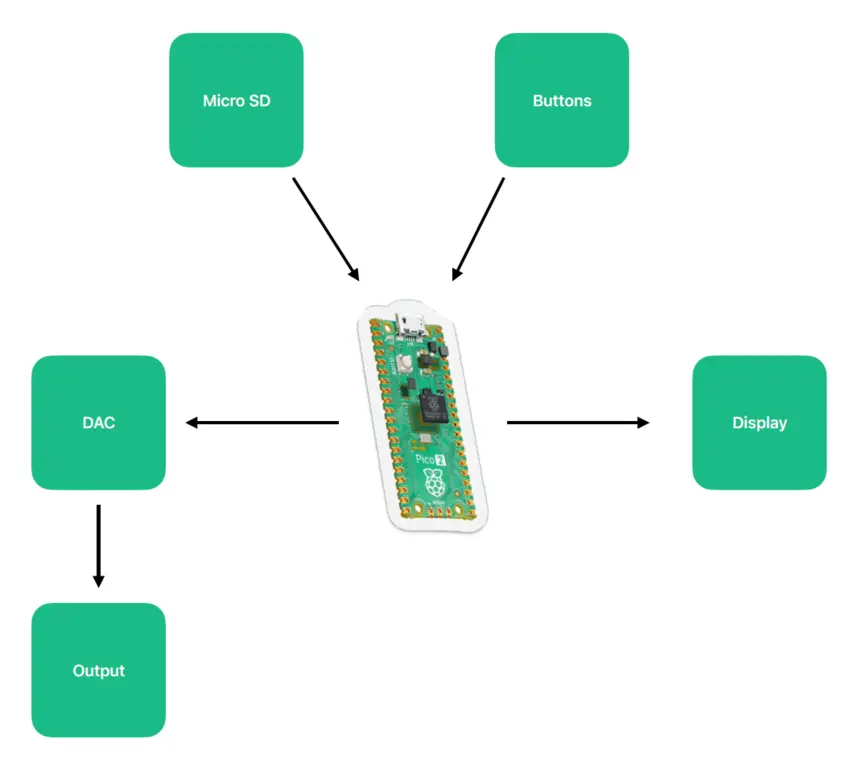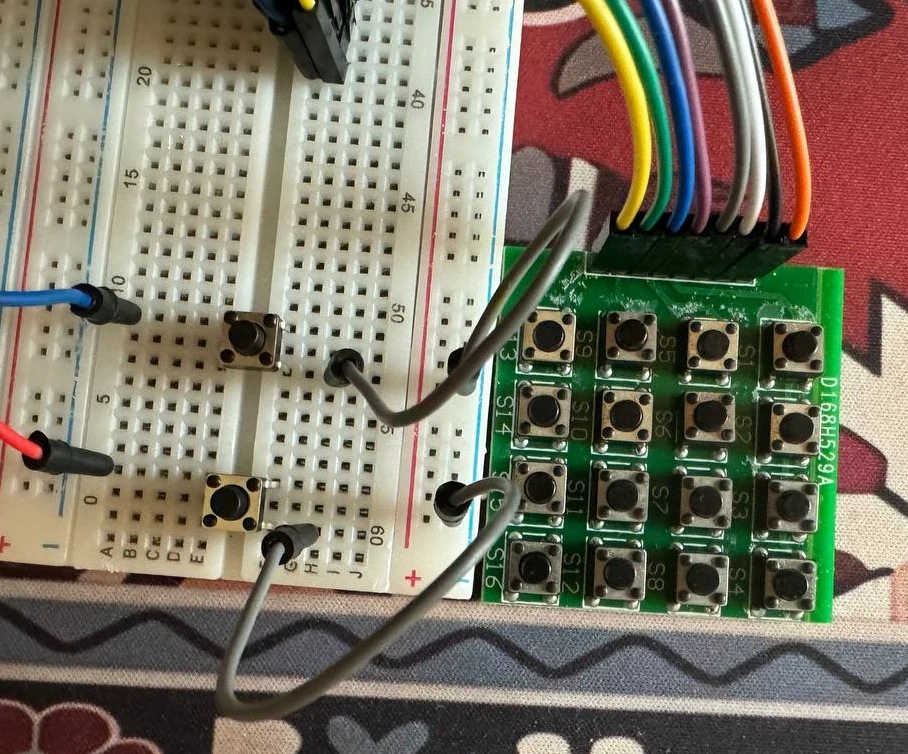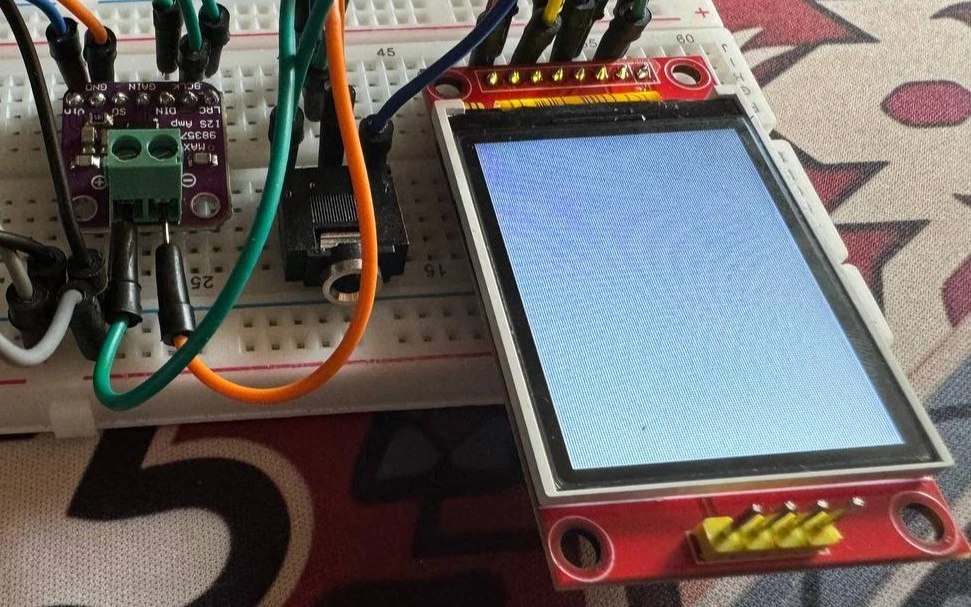CrateDigger
Dig. Chop. Loop. Repeat.
Author: Popa Nicolae
GitHub Project Link: https://github.com/UPB-PMRust-Students/proiect-nicupopa
Description
CrateDigger is a portable sampler built around a Raspberry Pi Pico 2 and programmed using the Embassy framework in Rust. The device allows users to sample audio, playback predefined samples, and perform beat-making using a 16-step sequencer. It features a user interface with tactile buttons, a TFT screen with animations, and high-quality audio output via DAC and an integrated speaker. Ideal for music producers looking for a portable sampler/sequencer.
Motivation
I have always been passionate about music and beat-making equipment. When the opportunity to pick this project came up, I knew it was the perfect opportunity to blend the two things I'm passionate about.
My goal is to create a compact, DIY sampler and sequencer that allows musicians and hobbyists to experiment with sounds, create beats, and take their creativity anywhere.
This project is not only a technical challenge but also a personal mission to create a fun tool that I might use in the future.
Architecture

Raspberry Pi Pico 2
Role: Central microcontroller, manages audio processing, input/output control, and overall device logic.
Connections:
Display, DAC, Buttons, and Output components.
Display (ST7735R)
Interface: SPI
Connections:
- SDA (Data Line) connected to Raspberry Pi Pico 2 SPI pins
- SCL (Clock Line) connected to Raspberry Pi Pico 2 SPI pins
Role: Displays user interface, sequencing steps and device status.
Buttons
Interface: GPIO
Connections:
- Connected to GPIO pins for controls (playback, recording, navigation, sequencing)
Role: Allows user input for sampling, playback, sequence control, and settings.
DAC (MAX98357A)
Interface: I2S
Connections:
- Connected via I2S interface pins on the Raspberry Pi Pico 2
Role: Converts digital audio signals to high-quality analog audio for speaker output.
Output (3.5mm)
Role: Outputs audio signal from the DAC to provide sound playback.
Log
- Week 5 - 11 May:
Began with a minimal setup: Pico and DAC, in order to verify the quality of the audio output. Next, I have connected the button matrix and mapped the buttons to sounds of different frequencies. By the end of the week I had a minimal implementation of the core functionality of the project. - Week 12 - 18 May:
Finished setting up the hardware parts on a breadboard, as well as tampering with the screen. Made adjustments to the KiCad schematic in order to illustrate the complete hardware. - Week 19 - 25 May:
Implemented WAV file support for samples, as well as the whole graphical interface. Made some minor adjustments to the schematic + bug fixes.
Hardware
- Raspberry Pi Pico 2 (RP2350): Main microcontroller handling audio processing and system logic.
- I2S DAC – MAX98357A: Converts digital audio signals to analog for high-quality speaker output.
- ST7735R display: Colored screen for animations.
- 3.5mm socket: Outputs audio playback. (Headphones not included!)
- Buttons: Input for interraction with the device.
Below I have provided an overview of the project on a breadboard:

User input close-up:

DAC, 3.5mm socket and screen close-up:

Schematics
Made using KiCad, this schematic represents the electronic design for CrateDigger. The MAX98357 DAC and the 3.5mm socket are placed on the left and next to them is the 4x4 button matrix used for adding samples. The display is placed on the right, along with play/write buttons.
Bill of Materials
| Device | Usage | Price |
|---|---|---|
| 2x Raspberry Pi Pico 2 W | The microcontroller | 80 RON |
| ST7735R Display | OLED visual interface | 29 RON |
| MAX98357 I2S DAC | Audio output module | 24 RON |
| 4 Ohm Speaker | Sound playback | 40 RON |
| Consumables (buttons, wires, etc.) | Various components | 50 RON |
Software
| Library | Description | Usage |
|---|---|---|
| embassy | Asynchronous embedded framework for Rust | Async executor and core runtime |
| embassy-rp | Embassy HAL for RP2040 | Access to GPIO, SPI, PIO, DMA, etc. |
| embassy-time | Timing primitives | Delay, Timer, Duration for delays and scheduling |
| embassy-sync | Concurrency primitives | Mutex protecting the shared SPI bus |
| embassy-embedded-hal | Adapters between Embassy and embedded-hal | SpiDevice wrapper for display SPI sharing |
| embedded-hal | Hardware-abstraction traits | Unified traits implemented by Embassy drivers |
| embedded-graphics | 2-D graphics library | Draws grid, numbers, and pad highlighting |
| mipidsi | SPI display driver (ST7735 etc.) | Initialises and drives the ST7735S TFT |
| display-interface-spi | SPI transport for displays | SPIInterface bridging Embassy SPI to the display driver |
| defmt | Structured logging for embedded | info! logging throughout the program |
embassy_rp::pio_programs::i2s | PIO-backed I²S driver | Outputs 16-bit stereo audio via RP2040 PIO |
